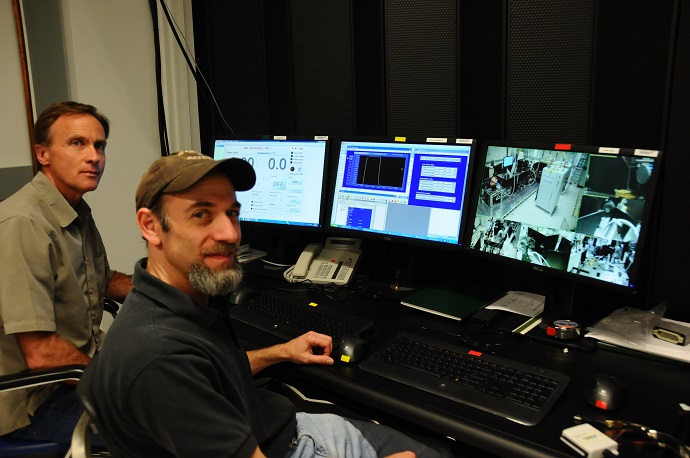October 29, 2014
The National Institute of Standards and Technology (NIST) has launched a new calibration service for high-power lasers of the sort used by manufacturers for applications such as cutting and welding metals, as well as by the military for more specialized applications like defusing unexploded land mines.
NIST is the only national metrology institute in the world to offer calibrations for laser power and power meters above 1.5 kilowatts(kW). The new service is offered for power levels up to 10 kW. Light focused from a 10 kW laser is more than a million times more intense than sunlight reaching the Earth.
NIST recently completed its first high-power calibration, for a commercial 5 kW laser power meter. The measurement had an uncertainty of about one percent over two standard deviations, the accuracy and precision threshold necessary for military and advanced manufacturing applications. "That level of uncertainty at multi-kilowatt levels is unprecedented," calibration leader Josh Hadler says. Laser output must be known exactly to achieve effective, safe performance in virtually all applications at these power levels.
To establish the new service, NIST staff bought a 10 kW fiber laser and extensively renovated a laboratory to meet electrical requirements and add appropriate safeguards such as walls with high damage tolerance and special optics and beam controls for the laser. Operators view the running laser from behind a protective barrier, using a multi-camera system for monitoring and control. Laser light is absorbed by a conventional calorimeter surrounded and cooled by flowing water. Staff measure the temperature difference between the incoming and outgoing water and use that value to calculate the laser power.
In addition to calibrations, NIST plans to use the new facility for research on the fundamental physical processes that occur during laser welding, which is often less expensive and hazardous than comparable conventional welding techniques. The study could help overcome technical challenges such as welding of materials that are dissimilar or have different thickness, potentially boosting the use of this technology and saving money for U.S. manufacturers. The ability to join dissimilar materials with greatly different properties would help overcome longstanding design and cost hurdles associated with welding.
NIST is developing faster and more portable laser power meters for use with kilowatt lasers,* which may eventually be used as transfer standards for the new service, project leader Paul Williams says. These innovations could enable NIST-calibrated measurements of high-power lasers to be performed in commercial labs or national metrology labs in other countries.
NIST has been developing and using laser measurement tools since the 1960s.** NIST laser calibrations provide benefits to hundreds of instrument users and commercial and military products annually, as well as hundreds of secondary users, helping to improve manufacturing processes and product performance and save money.
For technical descriptions of NIST laser calibration services and staff contact information, see www.nist.gov/pml/div686/calibrations/laser.cfm.
* See the 2013 NIST Tech Beat article, "Force to be Reckoned With: NIST Measures Laser Power with Portable Scale, " at www.nist.gov/public_affairs/tech-beat/tb20131022.cfm#laser, and the 2009 Tech Beat article, "New Nanotube Coating Enables Novel Laser Power Meter," at www.nist.gov/public_affairs/tech-beat/tb20090505.cfm#laser.
** See "Celebratingthe 50th Anniversary of the Laser: NIST's Role in Laser Measurements and Applications" at www.nist.gov/public_affairs/factsheet/laserfest.cfm.












